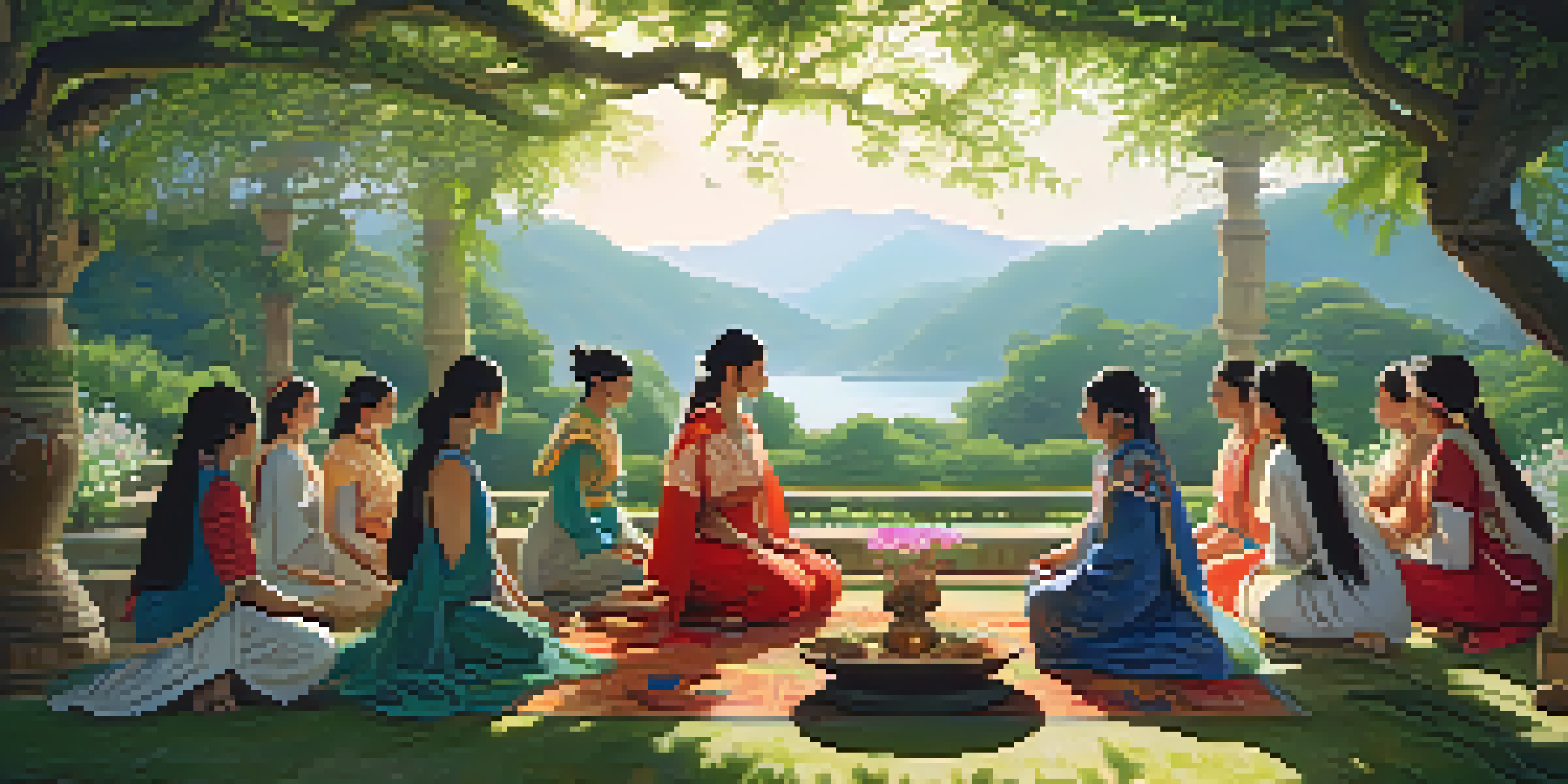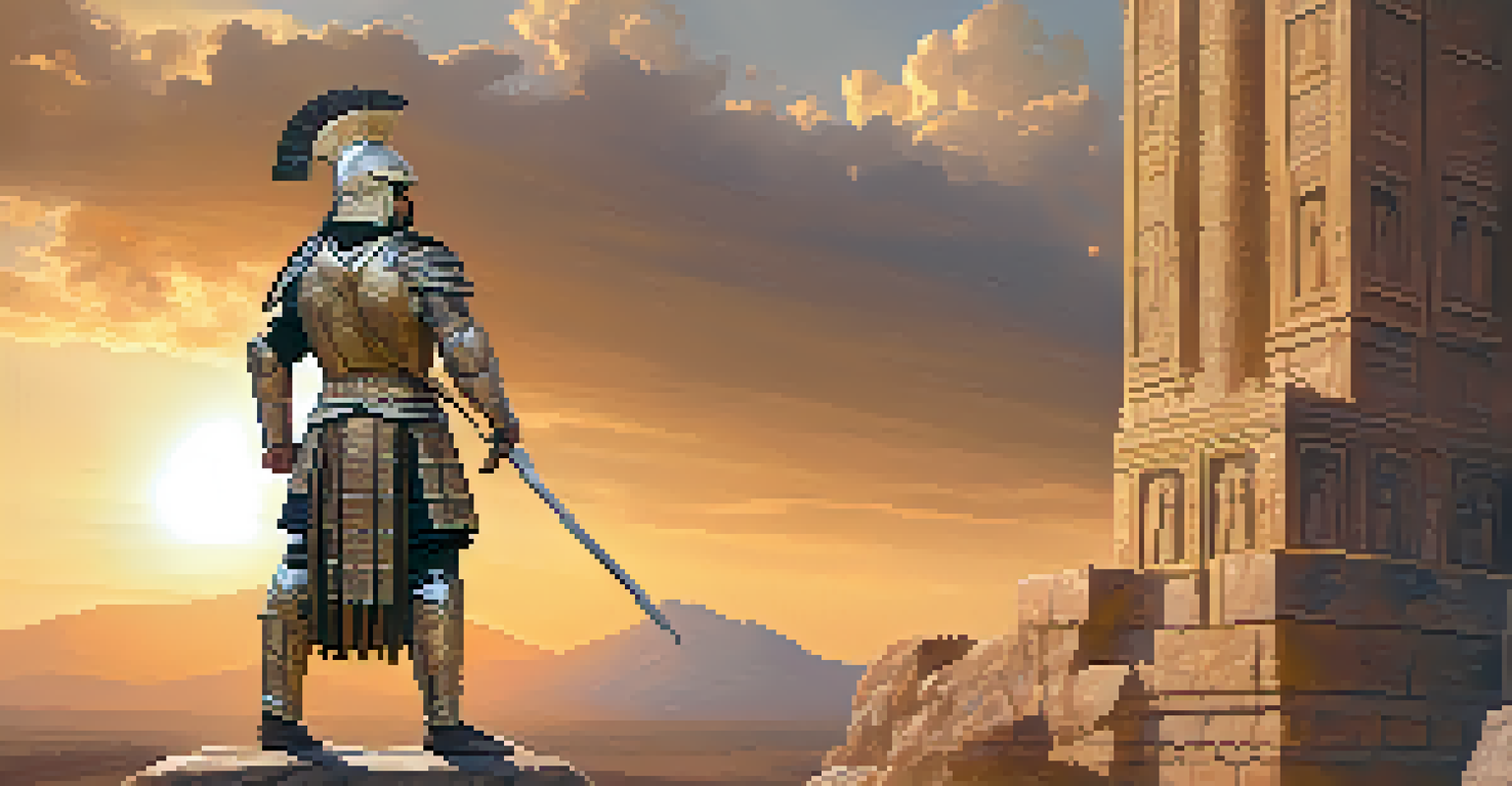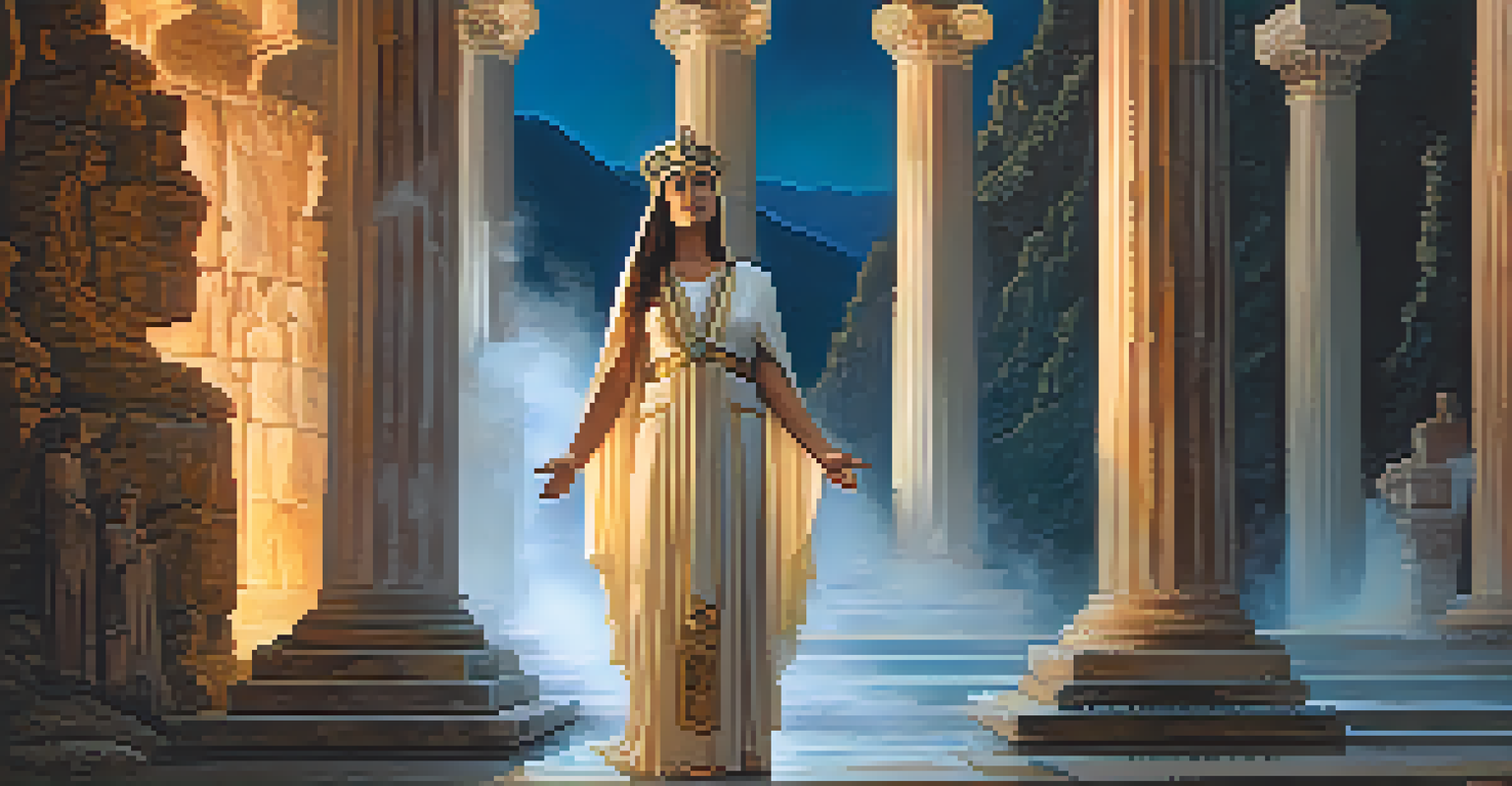Gender Roles in Ancient Spiritual Traditions Worldwide

Understanding Gender Roles in Ancient Societies
Gender roles in ancient societies were often deeply intertwined with cultural beliefs and spiritual practices. Men and women frequently held specific responsibilities that were believed to align with their spiritual or divine purposes. These roles were not just social constructs; they were often seen as essential to the balance of nature and the cosmos.
Gender is not an isolated social category, but a complex interplay of cultural, social, and historical forces that shape our identities.
For instance, many indigenous cultures viewed women as life-givers and nurturers, often associating them with fertility and the earth. In contrast, men were typically seen as protectors and providers, embodying qualities of strength and courage. This division of roles helped to maintain societal order and was reflected in various religious practices and rituals.
Understanding these roles requires unpacking the myths and stories that shaped them. In many traditions, gods and goddesses exemplified these roles, offering models for behavior that both men and women aspired to emulate. By examining these narratives, we can gain insight into how gender was perceived and valued across different cultures.
The Role of Women in Ancient Spiritual Practices
Women often played vital roles in ancient spiritual traditions, serving as priestesses, healers, and spiritual leaders. In many cases, their connection to the divine was seen as more intimate, which allowed them to hold significant power within their communities. For example, in ancient Greece, priestesses like the Oracle of Delphi held sway over political and personal decisions.

In various Native American cultures, women were revered for their wisdom and were often responsible for passing down oral traditions and spiritual teachings. This authority was reflective of their roles as life-givers, linking them to the earth and its cycles. Their spiritual practices often included rituals centered around the moon and fertility, emphasizing their connection to nature.
Gender Roles Shaped by Spirituality
Ancient societies often intertwined gender roles with spiritual beliefs, assigning specific responsibilities to men and women that reflected their cultural values.
However, the recognition of women's roles was not universal; in some traditions, patriarchal structures began to emerge, often relegating women to subordinate positions. The shift in power dynamics is a fascinating aspect of history, showing how spiritual beliefs and societal structures can influence one another over time.
Masculinity and Spiritual Authority in Ancient Traditions
In many ancient cultures, masculinity was closely associated with spiritual authority and leadership. Men often held positions of power as shamans, priests, or warriors, which were considered sacred roles. Their authority was reinforced by myths and stories that celebrated their strength and bravery, further entrenching male dominance in spiritual contexts.
The stories we tell about ourselves shape who we are and how we understand our place in the world.
Take, for example, the warrior cultures of ancient Mesopotamia, where men were not only tasked with defending their communities but also leading them in religious ceremonies. The role of the warrior was often idealized, linking physical prowess with divine favor and protection. This connection shaped how masculinity was viewed and aspired to within these cultures.
Yet, the concept of masculinity itself varied widely. In some traditions, such as certain African tribal societies, masculinity also encompassed nurturing and community-oriented roles, illustrating that male identity could be multifaceted. This diversity in understanding masculinity reveals the complexity of gender roles in ancient spiritual traditions.
The Influence of Mythology on Gender Roles
Mythology played a crucial role in shaping perceptions of gender roles across different cultures. The stories of gods and goddesses often reflected and reinforced societal norms regarding masculinity and femininity. For instance, in Egyptian mythology, goddesses like Isis were revered for their nurturing qualities, while gods like Osiris represented strength and authority.
These narratives not only served to entertain but also acted as moral guides for behavior. They offered paradigms for understanding one's role within the community and the cosmos. The tales of heroes and heroines often illustrated the traits valued by society, influencing how individuals viewed their own identities within the framework of gender.
Women Held Key Spiritual Roles
Women in ancient traditions frequently served as priestesses and healers, holding significant power and influence within their communities.
Moreover, these myths evolved over time, reflecting changes in societal values and beliefs. As cultures interacted and transformed, so too did their myths, leading to new interpretations of gender roles that would resonate for generations. This ongoing dialogue between mythology and societal norms highlights the dynamic nature of gender in ancient spiritual traditions.
Rituals and Their Gendered Implications
Rituals in ancient spiritual traditions often had gendered implications, reinforcing the roles assigned to men and women. For instance, certain ceremonies were exclusively for women, celebrating fertility and motherhood, while others were male-dominated, focusing on warfare and strength. These rituals served to solidify the social fabric, marking the importance of gender in spiritual practices.
Take the fertility rites in various cultures, which involved women in sacred rituals intended to ensure bountiful harvests and healthy offspring. These events were often communal, highlighting the role of women as central figures in nurturing society. In contrast, male rituals, such as initiation ceremonies, frequently emphasized physical endurance and combat skills.
The significance of these rituals extended beyond the immediate community, often influencing broader cultural narratives. They provided a framework for understanding gender roles and reinforced the notion that men and women had distinct, albeit equally important, contributions to their spiritual and social worlds.
Modern Interpretations of Ancient Gender Roles
Today, many scholars and practitioners are revisiting ancient spiritual traditions to understand their implications for contemporary gender roles. This exploration often leads to a re-evaluation of the narratives surrounding masculinity and femininity, challenging traditional views that have persisted over centuries. By examining these roles, we can draw parallels to modern issues of gender equality and representation.
For example, some modern spiritual movements are embracing the once-revered roles of women as leaders and healers, seeking to restore balance in their communities. This resurgence highlights the importance of recognizing the contributions of women throughout history and elevating their voices in today's spiritual and social discourse.
Mythology Influenced Gender Norms
Mythological narratives not only entertained but also reinforced societal norms about masculinity and femininity, shaping perceptions of gender across cultures.
Additionally, the study of ancient gender roles can inform our understanding of intersectionality, exploring how factors such as race, class, and culture intersect with gender. By weaving these narratives together, we can create a richer tapestry of human experience that honors the complexity of gender in both the past and present.
Conclusion: The Enduring Legacy of Gender Roles
The exploration of gender roles in ancient spiritual traditions reveals a tapestry of beliefs and practices that continue to influence modern societies. Understanding these roles helps us recognize the historical context from which current gender dynamics emerge. As we uncover the stories of both men and women, we can appreciate the diverse expressions of spirituality that have shaped human history.
Moreover, acknowledging the fluidity of gender roles in ancient traditions encourages a more inclusive approach to spirituality today. By learning from the past, we can foster an environment that values the contributions of all genders, paving the way for a more equitable future.

Ultimately, the legacy of ancient gender roles is one of complexity and evolution. As we continue to explore these traditions, we gain not only insight into the past but also inspiration for creating a more balanced world where everyone's voice is valued.